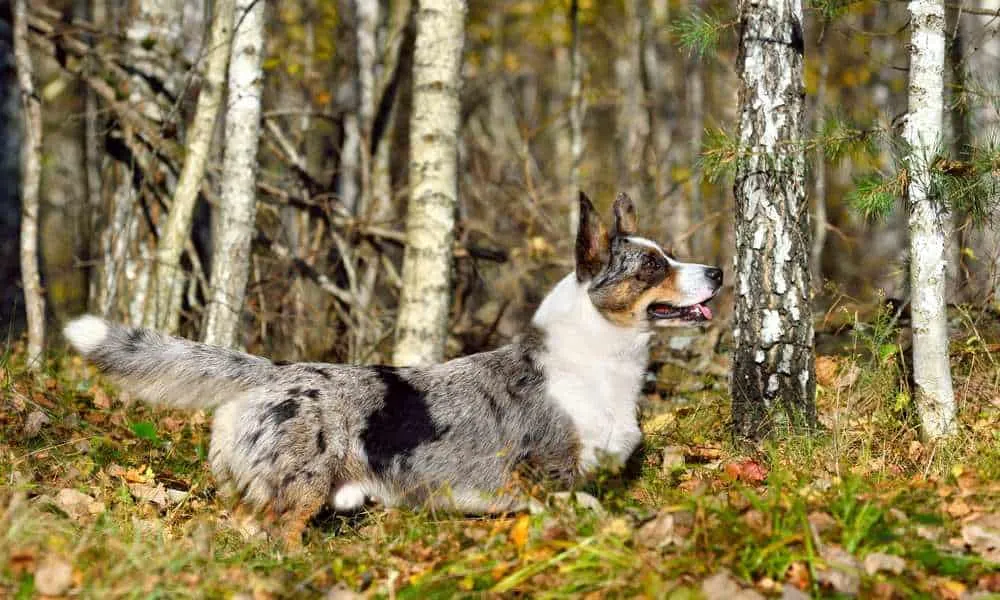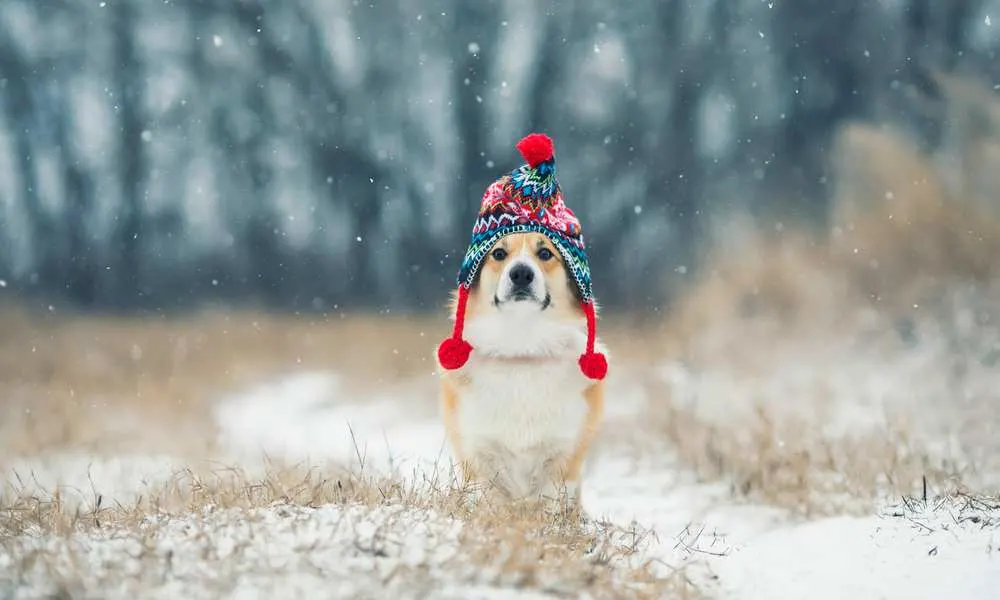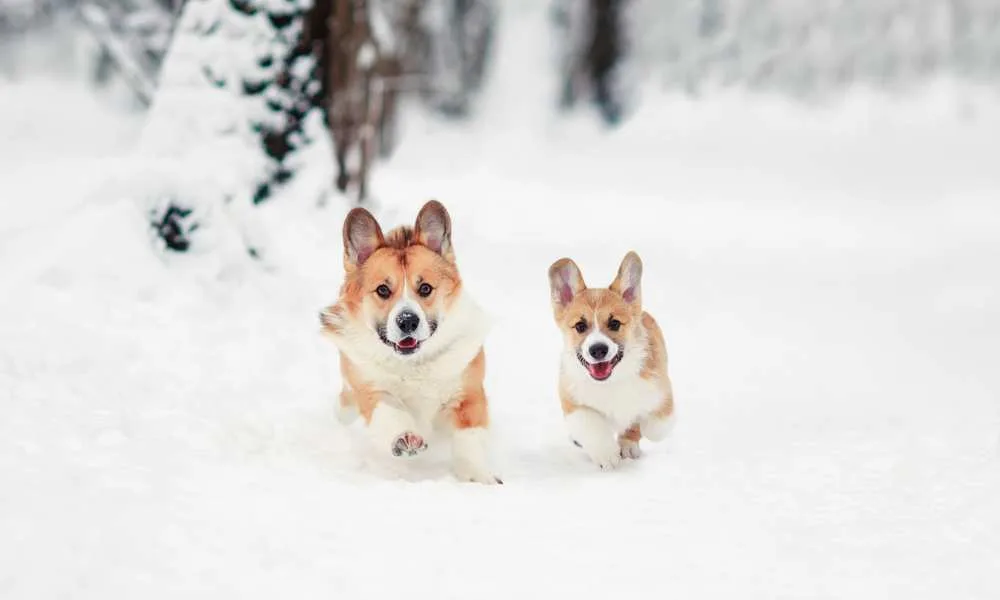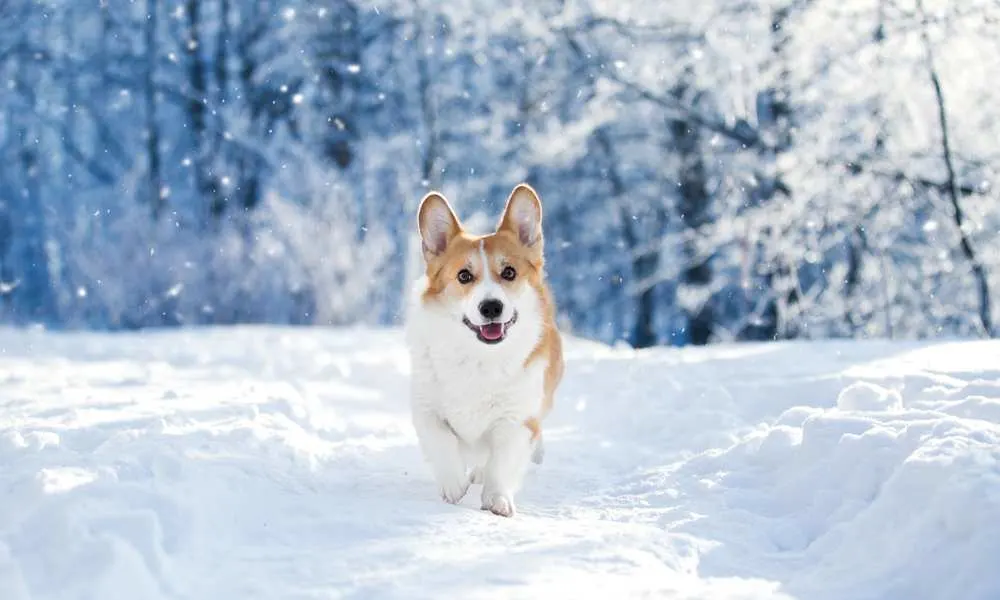If you have a Corgi in your family, there’s a good chance that you’ll get worried once winter comes around. Heck, any dog comes with a certain amount of worries once it gets freezing cold outside. And that makes sense; after all, your wearing enough clothes to warm up six Corgis, and yet your puppy’s walking around wearing only its fur.
So that begs the question – do Corgis need Sweaters? If you need all that insulation, then how can you even dare to take your dog out in such conditions?
It doesn’t help that a quick search online leaves you even more confused than when you started it. Some people get livid with the idea of taking your pup out without any clothes on, while others seem completely fine with the whole ordeal.
So who’s right? Is there a definitive answer, or does it depend on other factors that you can’t control? Well, it’s a bit of both really, don’t worry, we’ll explain.
We have to explain a couple of things about how dogs regulate their body temperature and a thing or two about their bodies in general. Don’t worry; we don’t plan to go into a full scientific mode. The point of this article is to inform you and to help you decide for yourself.
So let’s get to it. Does your Corgi need to get dressed in cold weather, or is he well dressed as is?

Do Corgis Need Sweaters?
Walking outside when the winter kicks in is very worrying to dog owners. The Corgi Folks are no exception since it would seem that our little friend can feel even colder once he runs into a freezing pile of snow. But the Christmas weather isn’t the only one that worries Corgi owners; some put a jacket on their puppy even when it starts raining outside.
We know that we make it all sound a bit funny, but keeping your dog well isolated and warm is very important. It’s just that you have to know that your dog is already doing it. Your puppy knows what it’s doing when it comes to surviving cold weather – Corgis know it even better than some other breeds.
So to give you a quick answer before we dive further into the subject – no, unless it’s absolutely freezing outside, your Corgi doesn’t need a sweater.

Corgi’s Rainy Origin
One of the first lessons that we think is important is knowing where your dog comes from. A breed that has evolved to survive a tropical climate is going to have a difficult time adjusting to even a mild winter. But for a husky, on the other hand, it’s a walk in the park.
So in what category does the Corgi fall into? Well, you might have noticed that your puppy has a great and luscious coat on – two coats, to be more precise.
That’s right; the Corgi is a well-dressed puppy that really doesn’t need much more helpful when it comes to warming itself up.
The Corgi story starts in the southern part of Wales, approximately 2000 years ago. Our favorite breed has been a little worker for longer than most countries have existed! You can imagine then that it is well equipped for the harsh weather conditions of southern Wales.
Wales is actually a pretty great place for learning about the climate. It’s an advantage that the Corgi has. See, in Wales, all four seasons are represented pretty well. The summers are on the milder side, just like fall and spring. Winter can get a bit harsh, but it’s no Russian mountain top; let’s get that straight.
So what does that all mean? Well, it means that your Corgi will always find a way to adapt to whatever condition you throw at it. But how does it do the adapting? Can it control its temperature somehow? Well, not exactly – it works like this:

Taking Their Coats On And Off
Your dog regulates its temperature in a similar way in which you want to do it when you’re putting a sweater on him. It just takes him a long time.
Dogs can’t sweat when they’re hot, and when they’re cold, all they can do is try and control their blood flow to the best of their abilities. The way they get ready for cold weather, on the other hand, is by replacing their fur. This is a year-round process. You can pretty much witness it happening every time you clean up the loose hairs of your couch.
It works like this. During springtime, your Corgi knows that the summer is coming and that it will be pretty with the winter coat that it has on right now. So the thick winter fur falls off, and a lighter coat grows back in. One that won’t hold as much heat in.
Similar to when the temperatures start dropping during fall, your puppy sheds the lighter coat and starts packing on the warm winter stuff! This is a year-long process that never stops. The only thing that can slow it down is actually cutting it or taking your Corgi for a haircut. We have to mention haircuts because they’re a terrible idea. All that they can do is mess up your Corgis natural shedding process.
When this process is tampered with, there’s a chance of its fur not coming in by wintertime. This means that its body is not insulated as well as it needs to be. Sure, your Corgi can’t tell precisely how harsh the winter will be, but it can get prepared well enough. So don’t take your Corgi out for a haircut. Corgi hair knows what it’s doing, don’t worry.
The only time in which your puppy could use a sweater is when the temperature drops below its lowest tolerance point. Corgis can handle temperatures from around 50 to 70 degrees Fahrenheit. It could get a bit tricky when the temperature drops below 50, but even then, it’s better to let your puppy handle it by itself.
With that said, this is a decision that you need to make on the spot. If your dog is shivering and is walking with an arched back, then it time to get him back inside and start thinking about a sweater. Just keep in mind that you should use them when they are needed. Don’t put clothes on your puppy just because they look good. Corgis already have pretty darn fashionable coats on; let’s get that straight!
We know that it sounds like we’re sweater hates, but we promise that that’s not the case! Sweaters are fine in extreme weather; heck, they can help quite a bit. But if you’re experiencing a mild winter in your region, there’s no need to put clothes on your dog.
Your dog’s body temperature is already higher than yours. This is important to know while in harsh winter conditions. It’s always a good idea, if you’re worried about your dog’s health, to measure their temperature every now and then.
Learn More: Do Corgis Need To Get Haircuts?

How To Know When It Too Cold?
It’s never a good idea to worry too much about your dog. It’s always better to stay objective and inform yourself as much as you can. With that said, we get that it’s stressful when you step outside with your Corgi and see that it’s shivering in the cold weather.
This is why we made a little winter guide for you and your Corgi. Your dog has been working on the windy and rainy hills of Wales for thousands of years, and we can guarantee that it knows how to handle a bit of harsh weather. But as with anything, you have to know what to do in extreme situations.
Also, if you don’t live in those rainy and windy hills, your dog probably doesn’t know what it like on them. If there’s sunshine throughout the year, which is then suddenly interrupted by a short winter – that’s going to be tricky for your puppy. It’s going to feel like an ice age for your Corgi.
These are the main things that you need to worry about during colder parts of the year:

Size
Often, people who had different, more giant breeds think that their Corgi will react the same way to winters as their other dogs. But smaller dogs get colder much quicker than their bigger cousins. The smaller the dog, the easier its body cools down. This is because they have much less skin that can protect and keep their organs warm.

Weight
How much your dog weighs is also a significant factor. If your dog is heavier than the average weight for the breed is, there’s a great chance that it has more body fat. Body fat insulated heat quite well.
So while we are very much against having n overweight dog, since it has been proven to be unhealthy in many ways, it could help with cold weather conditions.

Age
We’ve already mentioned that age can affect how your puppy handles cold. This is not so much about the age itself, but the tolerance level that builds up after many winters. Your Corgis body will figure out what kinds of weather it can expect in your region. When it does figure this out, it can adapt accordingly.

Movement
Corgis are active dogs. If your dog runs around when it’s outside, its body temperature will get high, no matter the weather.
This is actually one reason why older dogs don’t tolerate winters and younger ones. They just can’t get their heart to pump as fast as it used to. Mind you; we’re not talking about puppies when we say young dogs.

Wind – Rain
There is a big difference between a regular winter day and a windy or snowy one. Strong cold winds can cool down the Corgis little body like nothing else. If you add some water to the mix, you’ll have Corgi that just can’t get warm. So why is this?
Well, it’s simple. Your Corgi has a certain temperature that he tries to maintain with having heavy coats and being as active as possible. But that coat is weakened if it gets wet. And if the isolation isn’t as good as it should be – the whole system fails.
The Corgi is actually pretty well prepared for this situation. We mentioned many times how it was born and bred in Wales, where this kind of harsh weather is the norm. To be honest, there are very few dogs, especially at this size, that have such a strong coat that can guard them against the wind and the rain.
Nevertheless, if that double-coat gets soaked – you better get back inside. Sure your Corgi is prepared for this, but why risk it?
You can probably see a trend here. Your Corgi tries its best to develop a system that will protect it from getting cold. But as soon as that system is threatening, the best option is always to get back to the house.
Your puppy is your responsibility, so no matter how much it tries to protect itself, you have to try harder. Putting a sweater on your Corgi obviously helps, but if the situation calls for it, take things into your own hands. The sweater is just another layer; if it’s too cold, it’s too cold; simple as that.

Health Risks During Winter
We mentioned that there is a temperature range that your Corgi can handle. But what does that mean?
Well, in this range (50-70 degrees Fahrenheit), in the simplest words, your dog feels comfortable. That means that it can handle numbers that go a bit above and below those. But it can be dangerous to push those numbers too far.
We’ll focus on the lower end of the scale for this particular article. Be aware, though; the other end can be just as dangerous, if not more. Let’s take a look at some of the health risks that come with your Corgi being outside in the cold for too long.
The two most common risks that come with cold weather are Hypothermia and Frostbite. We put them in that order because one can’t happen without the other. Your dog can’t get Frostbite if it didn’t have hypothermia first. These are both severe condition s that need to be taken care of immediately.
Hypothermia basically means that your dog’s body has been at a low temperature for too long. It is one thing to feel chilly or even cold, but if your body keeps cooling down, there could be uncontrollable damage. The body starts to do anything to preserve hearing, which means that it draws blood away from the extremities to keep the vital organs warm and functional.
Once the body starts doing this, that’s when the Frostbite kicks in. Frostbite means that certain surface parts get left behind. When there is no more blood in them, they get colder and colder – this means that there will be irreparable damage at some point if it goes too far.
Don’t worry though, this can happen only in extreme conditions, but it can also occur if you’re not keeping an eye on your puppy. In extreme situations, you must always make sure that your Corgi is comfortable with the cold.
If your dog starts shivering just moments after you step outside – it’s too cold for him. This is an excellent time to get him a sweater. If the sweater doesn’t help either, you’ll need to make sure that your puppy runs around to get the blood flowing. Keep the walks short in this period as there could be dangerous risks, as we mentioned.
Your Corgis body is always showing you if it’s too cold outside; you just need to know what to look out for. Keep its coat as dry as possible in extreme conditions. This doesn’t mean that your pup can’t play in the snow; if it’s freezing cold outside – it’s better not to risk it.
So, let’s say you need to buy a sweater for your Corgi. The conditions are just awful, and it needs to be done. What kind should you get?

Which Sweater Should You Get?
When buying clothes for your dog, you need to get into a mentality of a mountain climber. It seems a bit weird, we know, but let us explain. You need to keep in mind that your dog pretty much doesn’t want to wear anything. Clothes feel weird to them, and that’s it.
You need to buy something that is low weight. A couple of ounces would be perfect. You need to make it as comfortable as possible for your dog. This will, in turn, make your life much more comfortable. Trust us; it’s not fun running around the house and chasing your dog because he doesn’t want to put on a sweater.
The material is the next factor you need to worry about. Obviously, we said that it needs to be light, but sometimes it’s alright to add a little bit of weight if it will give your Corgi a new insulation level.
Polyester sweaters are probably the safest bet. Their lightweight, and they keep the heat in very well. Good old fashioned wool is also a good option, but it can be on the heavier side. Whatever you do, just make sure that the material is at least somewhat waterproof. The worst thing you could do is putting something that can get soaked on your dog in the middle of winter.
Those are the general rules that we have for you if you feel that the weather conditions are a bit too extreme for your puppy. Safety first!

Final Words
Puppy sweaters are cute; there no two ways about it. But you have to ask yourself: Does my dog need them right now? Putting clothes on your Corgi as soon as a little wind starts going through your city is not the right call. Sometimes it can do more damage than good!
The best way to think about it is this:
Your corgi is not running around the street naked! There are two very sturdy coats on that little body that are made from about two thousand years worth of research. The Corgi didn’t work all that time guarding sheep in its home country for you to put a jacket on it as soon as it rains a little bit. Those coats use to stop teeth back in the day after all.
Not letting your puppy adjust to the weather is the opposite of helping. Sure, your Corgi could get the flu in its first winter, but that’s a part of life. Let your puppy adjust; it knows what it’s doing.
The best thing you can do is to get informed about what kind of weather is too much and learn to take care of your pup in any condition.
As long as you give well-deserved love and affection, your Corgi will be warmed up and ready for any challenge nature throws at it.

